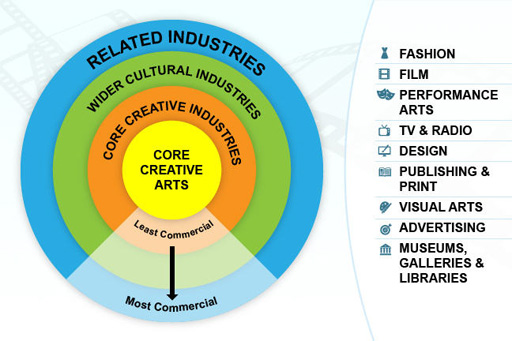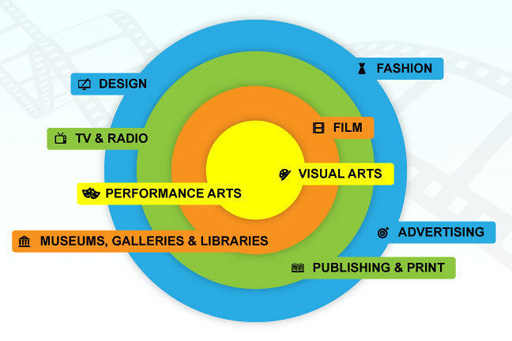1 Cultural and economic value of film
Film is part of the creative sector – a broad and often loosely defined area which represents a relatively fast growth sector of the economy (certainly in the UK). Along with other creative art forms, film also occupies an important place in cultural life.
To begin this course, think about film’s importance as both a cultural and a commercial activity, and how it compares in this respect with other activities in the creative or cultural sector.
Activity 1 Relative value in the creative sector
In Figure 1, examples of different types of creative industry are listed to the right of the ‘target’. The centre of the target represents the least commercial activity. As you move outwards, the coloured rings represent increasingly commercial activity. Decide where on the target you would place each of these industries.
Note down which colour ring you would place the industries in. You can use the boxes provided to note down some ideas, or you could draw your own version of the diagram if you prefer.
Here are some questions you might reflect on during this exercise:
- Do you think film is primarily a cultural artefact?
- Do you think film is primarily a commercial proposition?
- Do you think film should be both?
- How does film compare to other creative activities in this regard?
Fashion
Publishing and print
Museums, galleries and libraries
Answer
This is how David Throsby aligned those industries. David Throsby is an economist with specialist interests in the economics of the arts and culture. The diagram above reflects his attempt to make sense of this debate. He bases his point of view on a definition of value that encompasses cultural value (Throsby, 2001).


